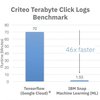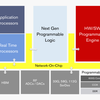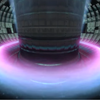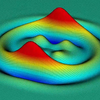NVIDIA kicked off this years GPU Technology Conference (GTC 2018) with a trio of announcements about new Tesla products, including an upgraded V100, an NVLink switch, and a new DGX-2 machine learning platform.
Using the newly developed SNAP Machine Learning (SNAP ML) framework and Power9/V100 GPU servers, IBM researchers were able to blow past Googles previous benchmark for training an online advertising application.
Episode 215: Addison Snell and Michael Feldman discuss the advent of quantum and brain mapping in HPC.
Xilinx has unveiled its adaptive compute acceleration platform (ACAP), a new FPGA product category that will form the basis for the companys push into the datacenter.
The prospects for OpenPower got a big boost this week, with the announcement that Google has deployed Power9 servers in its datacenters. That revelation was joined by the news that Tencent, PayPal, Uber, Alibaba, and LimeLight Networks are all adopting Power-based technology to support their various businesses. The announcements were made at the OpenPower Summit taking place in Las Vegas, Nevada.
Optalysys says they have built the worlds first implementation of a convolutional neural network using its optical coprocessor.
The National Institutes for Quantum and Radiological Science and Technology (QST) has selected a Cray XC50 supercomputer to support its mission to advance nuclear fusion research and development.
After just three years in the field, the High Performance Gradients (HPCG) benchmark is emerging as the first viable new metric for the high performance computing crowd in decades. The latest HPCG list compiled last November shows 115 supercomputer entries spread across 16 countries.
A research team at Northwestern University has developed a memtransitor, a device that could be the basis for advanced neuromorphic computers.
OnScale has emerged from stealth mode, unveiling a suite of CAE tools and plugins designed to run in HPC cloud environments.









